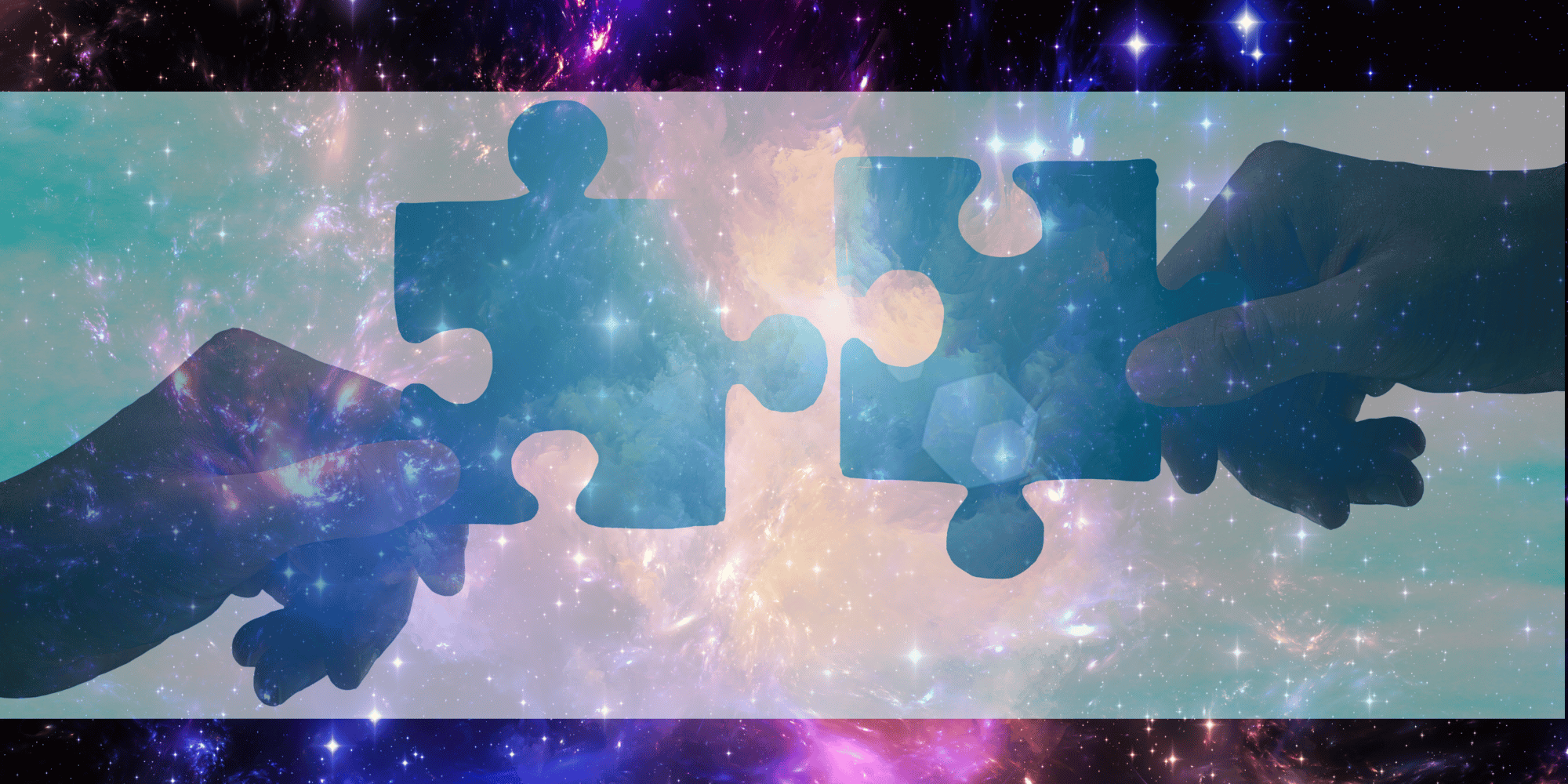What's YOUR problem? No really, what keeps you up at night? Why haven't you solved it already? You're a leader in your field; people introduce you as a thought leader in your space.
But the truth is that your biggest challenges are complex. In fact, you may not have the necessary data for good decision-making because a problem is too ambiguous, or you perceive the issues you are trying to address go way beyond your organization. Of course, the "I alone can fix it" mindset is rare (we hope) among leaders today.
Instead, the most effective leaders are known for unleashing the full power of their teams on a challenge and encouraging them, with resourced support, to engage collectively.
But what if the challenge is bigger than your team, or your organization?
Co-creation can help.
What is Co-Creation?
Just as there are no werewolves, there are no silver bullets. Almost all challenges require a mix of ideas, solutions, and results to address them. If you have a challenge that can't be solved with your current way of thinking, you need to adjust how you approach it.
For example, while working at IBM in 1999, Dave Snowden created the Cyefin model, a framework used to describe the five decision-making contexts or "domains" that decision makers often must navigate: clear (known as simple until 2014), complicated, complex, chaotic, and confusion. Understanding these domains can help managers to identify how they perceive situations and make sense of their own and other people's behavior.
One metaphor some people use to lay this out more clearly is that a car key is a "clear" concept. A car, with all its years of engineering advancements could be seen as complicated. A bunch of cars in traffic is complex. And chaotic is traffic, in a rainstorm, during rush hour, in Times Square on New Year's Eve, leaving the driver in a state of confusion on how best to get to their destination. In some of these cases, it makes sense for you to go it alone, but the more complex or chaotic things get, the better off you will be getting input from others.
Leveraging multiple perspectives to get a fuller picture of the challenge, and a more defined solution will better position you in complicated, complex, or chaotic environments. Resonance does this through co-creation.
Co-creation is at its heart a participatory design process.
A year ago, Resonance completed a broad evaluation of co-creation across agencies in a national government, defining the purpose of co-creation as “producing better outcomes by tapping into the ideas, resources, and energy of people who share a stake in the solution of a problem." It's surprising how often we don't do this--how often we avoid solving a problem together, opting instead to go it alone. This often comes down to concerns over trust or respect. Either we don't trust potential partners, or we don't think they will add value to the conversation. Often, we don't even know those potential partners exist.
Part of the co-creation process is understanding how to build enough trust so that we and our potential partners all know "what's in it for me" and "what's in it for you," so we can understand "what's in it for everyone to succeed."
When is Co-Creation the Optimal Pursuit in Solutions Development?
Co-creation is highly effective in three cases in particular:
1. When everyone is confronting the challenge together don't yet see each other as competitors.
In situations where competitors can join forces without violating antitrust laws, co-creation allows them to pool resources and expertise to tackle common issues. For example, in the pharmaceutical industry, companies have collaborated to combat diseases that affect global populations. By working together, they share research data, resources, and knowledge, ultimately accelerating progress and benefiting society as a whole.
2. When potential partners see the value in coopetition.
Coopetition is when partners simultaneously cooperate and compete. In industries like technology, companies may join forces to develop industry standards or open-source solutions. By collaborating on foundational technologies, they create a level playing field that fosters healthy competition and encourages innovation in other areas, leading to an overall stronger industry.
3. When the challenge is either complex or chaotic.
When the right approach or solution is often unclear, multiple perspectives are required to understand the problem fully. Co-creation enables diverse groups, including stakeholders, customers, and experts, to collectively explore the challenge, exchange ideas, and develop a more comprehensive understanding of the situation. This shared sensemaking process can lead to better problem-solving and decision-making. As Resonance is often working with partners on extremely complex and even wicked challenges, such as sustainability in a changing world, or global supply chain shifts, we are often operating in these contexts.
Does co-creation always require experts, or can it be achieved by anyone? The answer lies in the complexity of the problem at hand. In less complex situations, where the challenge is well-defined and there are known solutions, you may be able to depend on some common co-creation or innovation exercises to lead a group to success. For more complex problems, especially those within the domain of high expertise and specialization, trained facilitators and designers can be helpful.
Co-Creation Approaches that Yield Impact
To bring co-creation into their work and partnerships, there are some common tactics firms can employ:
Stakeholder Feedback and Co-Creation
Whether your stakeholders are customers, partners, beneficiaries, or constituents, inviting them to participate in concept development or service improvement processes enhances satisfaction, loyalty, results, and impact. It also helps partners become more aligned overall. In global development and impact initiatives, dedicated feedback through well designed MEL approaches (Monitoring, Evaluation, and Learning), ideally draws on user-centered design across frameworks to promote collaborative learning around feedback and data and can lead to the development of more dynamic capabilities and adaptive management.
Design Thinking Workshops
Design thinking methodologies, involving empathy, ideation, prototyping, and testing, can be used to facilitate co-creation sessions. This approach ensures that the end-users' needs and desires are incorporated. In global development and impact initiatives, adopting a human-centered approach is believing that all challenges -as difficult to eradicate as they may seem- such as gender equality, poverty, sustainability of resources, and access to clean water, can still be solved.
Design thinking inherent in co-creation workshops is even more compelling when the people who are primarily affected are the ones tackling the problems head-on. As design thinking evolves to be more participatory and inclusive, it will also become more co-creative.
Open Innovation Platforms
Companies can create online platforms or innovation hubs where customers, employees, and external stakeholders can submit ideas, collaborate, and vote on solutions. These platforms democratize innovation and encourage a wider range of perspectives.
Open Innovation has also proven to be value-added in global development initiatives and cross-sector partnerships, particularly when solutions with external technologies and innovation involve local implementing agencies, organizations, and champions as partners.
Open innovation that includes forms of localization is key to increasing the likelihood of impact longevity and sustainability of activities long after the project is completed. With significant capabilities in design & innovation, Resonance has managed many open innovation activities including competitions, challenges, and crowdsourcing.
Collaborative Partnerships
Organizations can establish partnerships with other firms, governments, academic and research institutions, or NGOs to tackle shared challenges. These collaborative efforts enable access to diverse resources, expertise, and funding.
Resonance co-founder and Chief Innovation Officer (CIO) Steve Schmida details in his book, Partner with Purpose, the methodology inherent in forging partnerships that deliver impact centering four stages: learning, aligning, building, and sustaining/scaling. At the core of this approach is a commitment among all partners to processes of co-creation.
Co-Creation, Change Management, and Sustainable Impact
Co-creation may not be the silver bullet for every challenge a company or organization is facing. However, we are learning that enabling and operationalizing co-creation suggests engagement, social and mutual learning, flexibility, and adaptation are key to enabling action in the face of problems that are complex, involve and impact many stakeholders, and often exude a great degree of uncertainty.
This is why co-creation should be inherent in change management approaches that can lead to more meaningful solutions and drive greater sustainable impact. If you aren't incorporating co-creation into your work already, you have an opportunity in front of you. Talk to Resonance, and we explore how co-creation might help.
Glen Burnett is Resonance Technical Director / Deputy Chief of Party for the USAID PEPSE mechanism, a six-year, $38 million project supporting USAID’s Private Sector Engagement (PSE) Hub and Private sector engagement (PSE) and partnership strategy at USAID.



